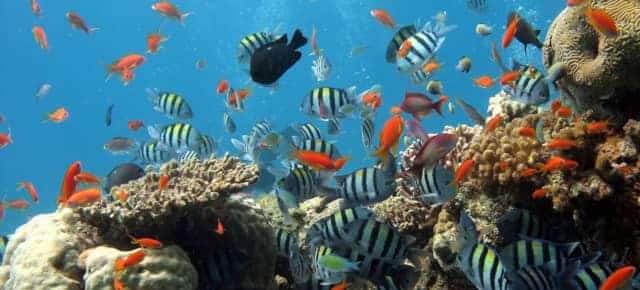What is thinking outside of the box? And what is thinking beyond the box? This article differentiates these two aphorisms.
One of the important abilities a researcher should possess is a good degree of creativity. How could someone achieve or develop this? How do you think outside of the box and free yourself of the typical?
There are various ways on how to be a creative person. One of those ways is to think “beyond” or “outside” the box.
Read on to find out the difference between these two metaphors and appreciate how this strategy works by reading the illustrative example given below.
One trait that separates a researcher from others is the ability to think in an unconventional manner. We refer to this as “thinking outside the box.”
However, I learned a better phrase to describe the ability to think differently from others, i.e., “thinking beyond the box”.
What is the difference between these two phrases?
The difference between thinking beyond and thinking outside of the box
The former aphorism appears to be the better phrase that describes how a researcher should think. Thinking beyond the box means thinking beyond what you already know, in discovering an unknown phenomenon — a fact or situation that simply exists or happens. Nobody may not have known it yet.
Thinking beyond the box recognizes stored knowledge in your brain that can discover new things. That stored knowledge may include the knowledge and skills you have gained in a formal setting, plus the experiences you have had in life.
Experiences include all those you have learned be it through reading books and magazines, viewing the television, talking with friends, exploring new places during a field trip, SCUBA diving, forest treks, jogging around or similar situations that will allow you to use your senses and gain from what you perceive.
Many people think, however, that both thinking “beyond” and “outside” the box are the same thing. The point is, it’s thinking using a different or unusual perspective to derive solutions to problems, discover something new, or create something new.
Using the senses to discover something new
I earlier discussed how keen observation can provide you with more information than just having a casual attitude towards what you see, hear, smell, taste, or touch around you. Activate all your senses while you explore around and you realize that there are many things that you have not known before.
You would never have thought that a massive coral is hard just by looking at it. You need to touch it. I thought it was soft the first time I did SCUBA diving in a coral reef, but touching it made me discover it is not only hard but something slippery is on it.

All these activities will enable you to think beyond the box as you allow your senses to detect something unusual from things that appear to be so ordinary to the layperson. Researchers are creative persons and think in novel ways that lead towards discovery.
A short story to illustrate thinking beyond the box
What kind of attitude should you have or possess for you to think beyond the box? I will illustrate this using a short story.
A graduate student drives his motorcycle for 60 kilometers every time he goes to school. Along the way, he saw various kinds of animals that get run over by vehicles passing through a highway that cuts through a thick forest. There were dead snakes, various kinds of birds, monkeys, anteaters, and even bearcats (a mammal that looks like a small bear, see below).

He felt bad about the apparent disregard of drivers on the importance of animals crossing the highway. But remembering his professor saying that he once had a Japanese researcher counterpart that would stop along the highway and inspect a dead animal, measure it and even dissect it, the student decided to conduct a study on the kinds of animals that get run over the highway. The data gathered will provide useful information to wildlife managers for conservation.
He did a year-long study, collecting all the data he could gather while traversing the highway. After a while, he organized his data and wrote a paper about his findings. As a result, he won an award for a job well done as a researcher.
Don’t you think this is an interesting way to look at things? Since the graduate student had an experience gained in school (learning about the importance of caring for what you see), he could do something worthwhile.
And where did that idea of studying run-over animals? Of course, that came from someone who thought beyond the box – the Japanese researcher who saw the event (animals run-over by vehicles) as an opportunity to study the kinds of animals that inhabit the forested area, have a look at their reproductive organs if in rut or not, measure their size as part of a morphometrics study, find out their color, get samples for DNA study, determine places where they have been probably hunting for food and see what they eat, and many other things you can imagine. The event did not pass unnoticed but required thinking and, acting on the situation.
That’s how researchers should think.
© 2013 May 21 P. A. Regoniel | Updated 2023 January 2023

